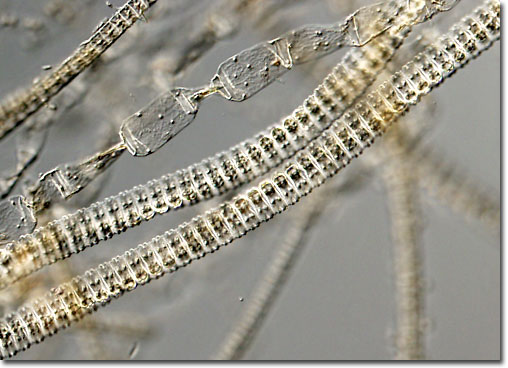|
Large populations of Zygnema can significantly affect the pH level of an aquatic environment. During daylight hours, the hair-like strands of algae produce considerable volumes of dissolved oxygen. At night, however, there is a reverse in the metabolic process and the masses of Zygnema consume oxygen and generate carbon dioxide as a waste product of cellular respiration. When the creation of carbon dioxide in the water is very rapid due to substantial numbers of Zygnema, the pH level changes too quickly for many other aquatic organisms to easily adjust, resulting in stress and aberrant behavior.
|
